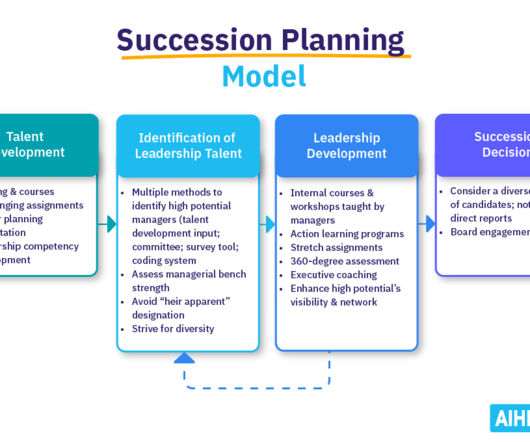From HR Manager to HR Strategist: Steps to Become a Strategic Business Partner
EmployeeConnect
DECEMBER 9, 2024
Mastering predictive analytics is particularly valuable, as it allows HR to anticipate employee trends like turnover, absenteeism, and performance challenges. To become a true strategic partner, HR managers must be able to present insights, not just numbers. One way to achieve this is through succession planning.























































Let's personalize your content